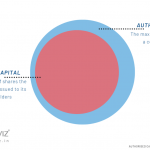
After you reconcile, you can select Display to view the Reconciliation report or Print to print it. If your beginning balance doesn’t match your statement, don’t worry. If you signed up to try a new way to reconcile in QuickBooks Labs, click here. You’re in the right place to learn about the current QuickBooks reconciliation.
It needs to match the balance of your real-life bank account for the day you decided to start tracking transactions in QuickBooks. The next step is to identify any discrepancies between these two sets of records, which could be due to errors, omitted entries, or timing differences in recognizing transactions. Once these discrepancies are identified, they need to be thoroughly investigated. For instance, if a check issued by the company has not been cashed, it would show up in the company’s records but not on the bank statement. It is commonly used in banking (to reconcile a checkbook with a bank statement), in businesses (to reconcile revenue or expenses), and in personal finance management. Give your customers the option to pay via credit card, debit card, PayPal, or bank transfer.
How to reconcile accounts in QuickBooks Desktop
This article guides users through the detailed steps on how to reconcile in QuickBooks Online and QuickBooks Desktop, ensuring their financial data aligns seamlessly with bank and credit card statements. When matching transactions, it’s important to compare each entry on your bank statement with the corresponding records in QuickBooks Online, paying close attention to dates and transaction details. If a transaction matches, mark it as reconciled by placing a checkmark next to its amount in QuickBooks Online. Transactions added or matched from online banking are usually pre-selected for convenience. If a transaction appears in QuickBooks Online but not on your statement, do not mark it.
Ensure that the Statement Date in QuickBooks Desktop corresponds with your actual bank statement, making adjustments as needed. QuickBooks Desktop will automatically generate a Beginning Balance based on your last reconciliation. Common causes of these discrepancies include missed transactions that are in the bank statement but not in QuickBooks, duplicate transactions recorded more than once, and incorrect transaction amounts.
Troubleshooting common reconciliation issues in QuickBooks Online and QuickBooks Desktop
In cases involving significant or complex issues, it is recommended to seek the assistance of an accounting professional. If you want to reconcile in QuickBooks Desktop, this guide provides a detailed, step-by-step approach to help you through this process. Give your accountant direct stationery is an asset or an expense access to your books so she can find the reports and information she needs when questions arise. Create a separate login for your accountant to make it easy for her to work with you.

How to reconcile accounts in QuickBooks Online
- This process is vital in verifying that the records in QuickBooks accurately reflect a business’s financial transactions.
- QuickBooks processes the payment and transfers the money to your bank account.
- The tricky part is making sure you have the right dates and transactions in QuickBooks so you know everything matches.
- In QuickBooks, you have the option to make an adjusting entry if the difference isn’t zero when you are finished reconciling.
Once you’re done, you should see a difference of $0, which means your books are balanced. You can also make small edits if needed right within this window. For example, if the payee is wrong, you can click on the transaction fully burdened labor rate to expand the view and then select Edit.
Read the steps you should take when closing out your small business’ books for the end of the fiscal year. (If you’re in the middle of reconciling, stay on the page you’re on and skip to step 4). Here’s how you can review all of your cleared transactions. Now, simply compare the transactions on your statement with what’s in QuickBooks.
By systematically addressing discrepancies, ensuring balance, and amending previously reconciled transactions correctly, the integrity of your financial records can be maintained. Account reconciliation in QuickBooks is a pivotal task for maintaining accurate and reliable financial records. This guide has walked you through the essential steps of the reconciliation process, from preparing your documents to troubleshooting common issues. Select the appropriate bank or credit card account to reconcile from the Account field.
Just like balancing your checkbook, you need to review your accounts in QuickBooks to make sure they match your real-life bank and credit card statements. Just like balancing your checkbook, you need to review your accounts in QuickBooks to make sure they match your bank and credit card statements. When you create a new account in QuickBooks, you pick a day to start tracking transactions. You enter the balance of your real-life bank account for whatever day you choose. We recommend setting the opening balance at the beginning of a bank statement. Connect QuickBooks to your bank, credit cards, PayPal, Square, and more1 and we’ll import your transactions for you.
If there are transactions that haven’t cleared your bank yet and aren’t 8 ways companies cook the books on your statement, wait to enter them. If you reconciled a transaction by mistake, here’s how to unreconcile it. If you adjusted a reconciliation by mistake or need to start over, reach out to your accountant.

